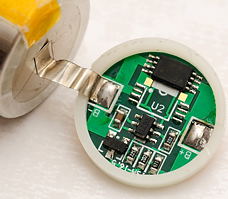johnyradio
Electrical
Ok, i know you guys are going to laugh at me for even attmpting to do this, but here goes:
i purchased this battery. from a us-based vendor.
i checked the battery voltages on delivery. All were about 3.7 volts. Good sign.
i peeled away the base of one of the batteries, and indeed there was a little circuit board, with a conductor running up the side of the battery to the top.
i connected FOUR of these batteries in series. They gave 15.7 volts.
then i connected a 19 volt wall wart to the ends. after 15 minutes the batteries were warm, not hot. i disconnected, and the pack gave over 17 volts! That's too high-- a 4-pack should max at 16.8 V.
i checked each battery-- 3 batteries were under 4.2 V, but one battery measured 4.9 volts!
How could a protected battery charge to 4.9 V?
thx
i purchased this battery. from a us-based vendor.
i checked the battery voltages on delivery. All were about 3.7 volts. Good sign.
i peeled away the base of one of the batteries, and indeed there was a little circuit board, with a conductor running up the side of the battery to the top.
i connected FOUR of these batteries in series. They gave 15.7 volts.
then i connected a 19 volt wall wart to the ends. after 15 minutes the batteries were warm, not hot. i disconnected, and the pack gave over 17 volts! That's too high-- a 4-pack should max at 16.8 V.
i checked each battery-- 3 batteries were under 4.2 V, but one battery measured 4.9 volts!
How could a protected battery charge to 4.9 V?
thx


